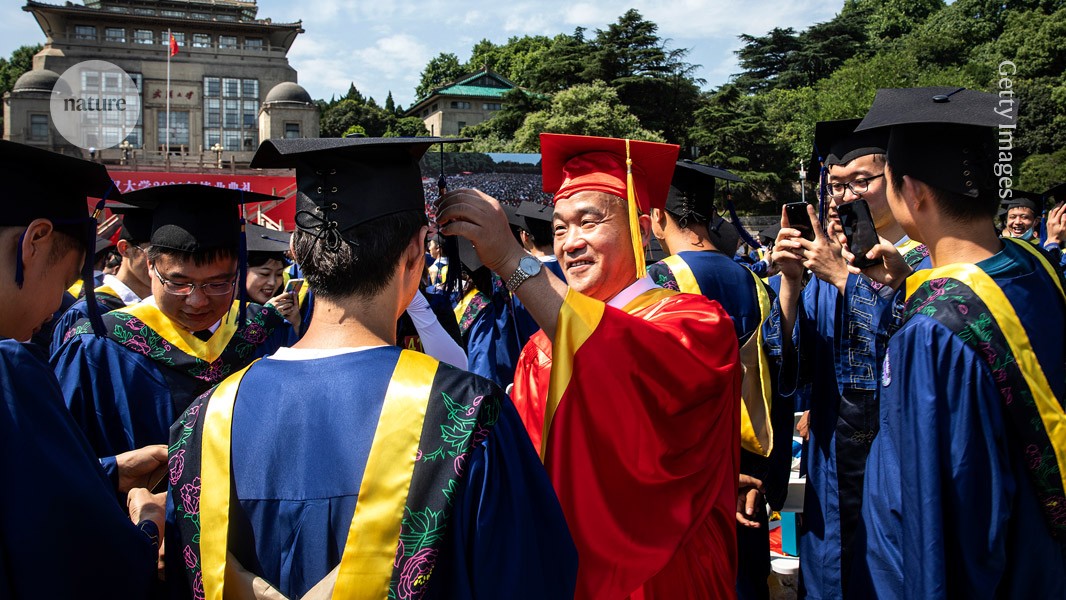How a space physicist is shaking up China’s research funding

As president of the country’s natural science foundation, Dou Xiankang has prioritized support for young scientists and plans to boost investment in basic science

Before helming the NSFC, Dou Xiankang was the president of Wuhan University.Credit: Getty Images
Space physicist Dou Xiankang took the helm of the National Natural Science Foundation of China (NSFC) little more than a year ago, but has already introduced reforms to support young and early-career scientists, particularly female researchers. Among the changes are an extension to the Distinguished Young Scholars (DYS) programme, which gives outstanding young scientists an opportunity to pursue research of their choosing. DYS recipients are funded for five years, but up to 20% of them will now be eligible for a further five years of funding.
The NSFC is based in Beijing and is one of the country’s main funders of basic research. Dou spoke to Nature about what he hopes to achieve with these reforms and his plans to boost China’s investment in basic research.
What are your priorities for the NSFC in the next few years?
The NSFC has two major tasks: to fund basic research projects and to support excellent young scientists. Since the NSFC was established, almost 40 years ago, we have made achievements in these two tasks. The priority for me as president is to make sure that those previous success stories can be continued.
Over the past year, we have implemented measures to extend the funding and support available to young scientists. We have opened the Excellent Young Scientists Fund to researchers in Hong Kong and Macau. We have introduced measures to support and evaluate clinicians who also want to conduct basic research. And we have extended the age limit for DYS applications by 3 years to 48 years old for female applicants. We hope to encourage more participation from female scientists, who tend to shoulder more family responsibilities.
We have also piloted offering funding to undergraduate students to help them start research careers. The NSFC funded 129 undergraduate students across eight universities in China in 2023. Recently, we met with the German research foundation (DFG) to discuss the possibility of sending these undergraduate students to attend the DFG’s leadership programme.
What was the impetus for extending the DYS programme in some cases?
The programme is the most influential talent-cultivation programme of our foundation. We have already selected the most promising young scholars with our scientific criteria, so we wish to continue this practice.
One thing that needs particular attention is for young scientists to be encouraged and supported so that they can devote themselves to basic research in the long term. How can these scientists create an environment where they can focus on their research and come up with original innovations?
Our reform measure aims to provide long-term and stable funding.
What’s your response to concerns that increasing funding to the best and brightest makes it harder for the wider early-career research community to obtain grants?
I don’t think these two things are in conflict. Each year we award fewer than 450 DYS grants, so it is very limited. Two-thirds of the NSFC’s funding is used to support curiosity-driven research. In 2023, we funded more than 40,000 grantees across the Young Scientists Fund and general programmes, which support scientists who have good prospects. From these programmes, we can identify the top 1% most promising young researchers for further funding.
Among research-intensive nations, China's investment in basic research as a proportion of GDP is relatively low. What steps are you taking to address this?
The Chinese government has always attached great importance to basic research. In 2024, the government’s budget allocation to science and technology increased by 10%, and the NSFC received 36.3 billion yuan (US$5 billion). Since the NSFC was established, the funding we have received from the central government has increased by almost 400 times.
I think the gap between China’s investment in basic research and that of other countries is caused by limited investment from the private sector. We have two initiatives to increase funding in basic research. One is to apply for more funding from the central government; the other is to establish joint funds with enterprises and local governments, with each contributing. For example, we could contribute 20% to the joint account, while the corporate sector or local government would provide the remaining 80%.
The objective of these joint funds is to leverage our limited resources and encourage more investment. By doing this, we can jointly initiate basic research projects that will ultimately benefit both enterprises and local governments.
How do you plan to expand international collaborations in basic research?
As China’s economy and investment in basic research grows, the Chinese research community should further contribute to international efforts, particularly in fields such as the life and health sciences, and sustainable development.
Last year, the NSFC established the Department of International Programmes to encourage Chinese researchers to forge international collaborations and to encourage international scientists to carry out their work in China.
In May, I led a delegation to the Annual Meeting of the Global Research Council, where we had a lot of discussions with our international counterparts. Such discussions are always conducted with the clear objective of expanding international collaboration, especially in funding basic research projects.
doi: https://doi.org/10.1038/d41586-024-02464-9
This article has been edited for length and clarity.
This story originally appeared on: Nature - Author:Gemma Conroy


















